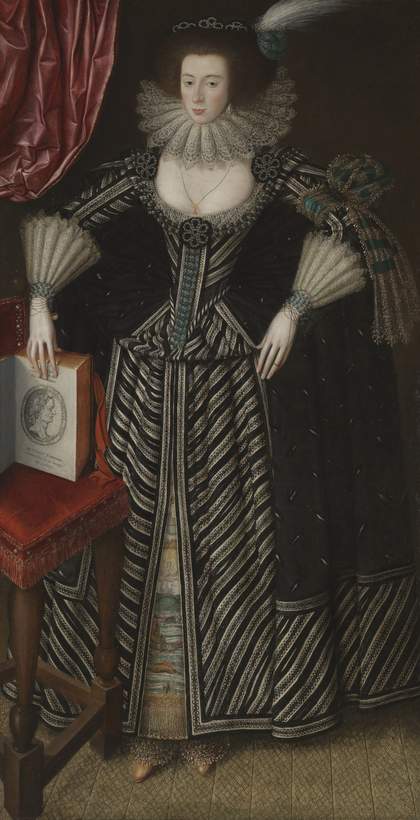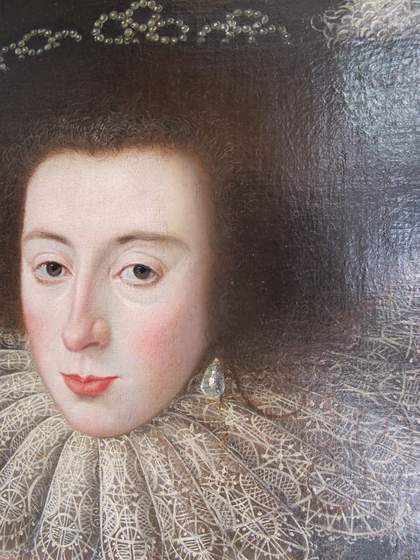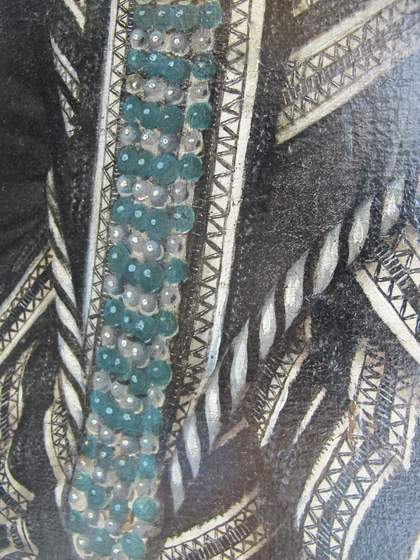
Fig.1
Unknown artist, Britain
Portrait of a Lady, probably Mrs Clement Edmondes
c.1605–10
Oil paint on canvas
2100 x 1098 mm
T15214
The painting (fig.1) appears to be executed on a single piece of canvas with a plain weave.1 This has been lined onto a linen canvas using presumed glue paste adhesive and mounted onto a 7-member wooden stretcher which is not original. Small tears in the background and the figure were the reason for lining: a small vertical slit in the sitter’s upper left arm has also been repaired with a patch. Areas of retouching are visible in normal light, on close examination, though not all the tiny losses have been retouched. In three areas, the retouching reconstructs elements of the composition: at the far-right side of the sitter’s face between the right eye and the hair, and to the top left and bottom right of the open page of the book. The reconstruction in the two areas of the book has been executed with skill but is now slightly discoloured due to age. The reconstruction of the far-right side of the sitter’s face appears to have been executed by a more amateur hand but is not visually disturbing at normal viewing distance. Notable abrasion has occurred in the dark black glazes of the drapery. Elements of the composition appear to have been strengthened, such as in the legs of the chair, and smaller areas of loss have been toned, but not filled, or left as exposed canvas. The latter are particularly evident around the edges. The painting may have been selectively cleaned in the past. The non-original and patchy varnish present in 2003 is slightly yellowed. In that year the surface was given a brushed coat of MS2A followed by a sprayed coat of Paraloid B72, then a sprayed varnish of MS2A with Cosmolloid wax.
A light grey ground is visible beneath areas of pearl decoration, but the rest of the surface is densely painted.

Fig.2
Detail showing the head and the lace collar

Fig.3
Detail showing gold thread on the bodice
Overall, the painting is executed with simple layering of tones to create depth and shadow. The sitter is depicted in a rich and expensive dress, with careful detailing in a slight impasto of opaque white and yellow for the lace (fig.2) and gold thread (fig.3) of the costume. There is a possible pentimento in the ribbon used to tie the seal around the sitter’s neck, visible as a darker line beneath the flesh paint, lying adjacent to the final ribbon.
The frame is a wood and gesso construction which is painted on the front in black with gilt cassetta moulding. Metal nails have been used at the corner joints for decoration. It is not original.
March 2022
